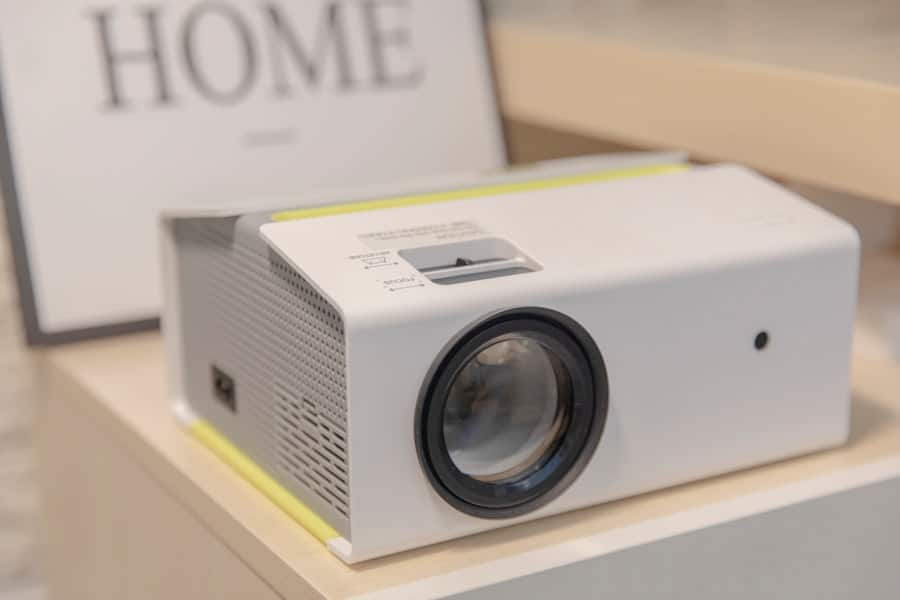In recent years, the landscape of consumer electronics has undergone a significant transformation, largely driven by the rise of second-hand electronics platforms. These platforms have emerged as a response to the growing demand for affordable technology and the increasing awareness of sustainability among consumers. The proliferation of smartphones, laptops, and other electronic devices has led to a surge in electronic waste, prompting many individuals to seek alternatives to purchasing brand-new items.
As a result, online marketplaces dedicated to second-hand electronics have gained traction, providing users with a convenient way to buy and sell pre-owned devices. The growth of these platforms can be attributed to several factors, including advancements in technology and the widespread adoption of e-commerce. With the advent of user-friendly websites and mobile applications, consumers can now easily navigate through vast inventories of used electronics.
Additionally, social media has played a pivotal role in promoting these platforms, as users share their experiences and recommendations with friends and followers. This organic word-of-mouth marketing has contributed to the increasing popularity of second-hand electronics, making it a viable option for budget-conscious consumers and environmentally conscious individuals alike.
Key Takeaways
- Second-hand electronics platforms are rapidly growing in popularity and accessibility.
- Buying and selling used electronics offers cost savings and extends product life.
- Purchasing second-hand devices significantly reduces electronic waste and environmental harm.
- Key considerations when buying include device condition, warranty, and seller reputation.
- Consumer interest in second-hand electronics is driving innovation and expansion in the market.
Benefits of Buying and Selling Second-Hand Electronics
One of the most compelling benefits of buying second-hand electronics is the significant cost savings associated with it. Consumers can often find high-quality devices at a fraction of the original retail price. For instance, a gently used smartphone that originally retailed for $800 may be available for as little as $400 on a second-hand platform.
This affordability allows individuals to access the latest technology without straining their budgets, making it particularly appealing to students and young professionals. In addition to financial savings, purchasing second-hand electronics can also provide consumers with access to discontinued or hard-to-find models. Many tech enthusiasts seek out vintage or legacy devices that are no longer in production.
Platforms specializing in second-hand electronics often feature a diverse range of products, allowing buyers to discover unique items that may not be available through traditional retail channels. This aspect of second-hand shopping fosters a sense of community among users who share similar interests in technology and nostalgia. On the selling side, individuals can declutter their homes while making some extra cash by selling their used electronics.
Many people accumulate devices over time that they no longer use or need, such as old smartphones, tablets, or gaming consoles. By listing these items on second-hand platforms, sellers can not only recoup some of their initial investment but also contribute to a circular economy where products are reused rather than discarded. This practice not only benefits sellers financially but also promotes responsible consumption.
Environmental Impact of Second-Hand Electronics

The environmental impact of second-hand electronics cannot be overstated. The production of new electronic devices is resource-intensive, requiring significant amounts of raw materials such as metals, plastics, and rare earth elements. By choosing to buy second-hand electronics, consumers help reduce the demand for new products, thereby minimizing the environmental footprint associated with manufacturing processes.
This shift towards pre-owned devices is particularly crucial in an era where electronic waste (e-waste) is becoming a pressing global issue. E-waste is one of the fastest-growing waste streams worldwide, with millions of tons generated each year. Many electronic devices contain hazardous materials that can leach into the environment if not disposed of properly.
By purchasing second-hand electronics, consumers play a vital role in extending the lifespan of these products and reducing the volume of e-waste that ends up in landfills. Furthermore, many second-hand platforms have implemented recycling programs or partnerships with organizations that specialize in responsible e-waste disposal, further enhancing their positive environmental impact. Moreover, the circular economy model promoted by second-hand electronics platforms encourages manufacturers to design products with longevity in mind.
As consumers increasingly opt for used devices, companies may be incentivized to create more durable products that can withstand the test of time. This shift in consumer behavior could lead to a more sustainable approach to technology production and consumption, ultimately benefiting both the planet and future generations.
Factors to Consider When Buying Second-Hand Electronics
When purchasing second-hand electronics, several factors should be taken into account to ensure a satisfactory buying experience. First and foremost is the condition of the device. Buyers should carefully review product descriptions and images provided by sellers to assess any signs of wear or damage.
Many platforms offer ratings or reviews from previous buyers, which can provide valuable insights into the reliability and quality of the item being considered. Another critical factor is the warranty or return policy associated with the purchase. Unlike new products that typically come with manufacturer warranties, second-hand items may have limited or no warranty coverage.
Buyers should inquire about any guarantees offered by the seller or platform to protect themselves against potential defects or malfunctions. Understanding the return policy is equally important; a flexible return policy can provide peace of mind for buyers who may be uncertain about their purchase. Additionally, compatibility is an essential consideration when buying second-hand electronics.
For instance, when purchasing used laptops or smartphones, buyers should ensure that the device meets their specific needs in terms of software compatibility and hardware specifications. Researching the model’s capabilities and limitations can help prevent buyer’s remorse down the line.
Popular Second-Hand Electronics Platforms
The market for second-hand electronics has given rise to numerous platforms catering to various consumer needs. One of the most well-known platforms is eBay, which allows users to buy and sell a wide range of electronic devices through auctions or fixed-price listings. eBay’s extensive reach and established reputation make it a popular choice for both buyers and sellers looking for second-hand electronics.
Another notable platform is Swappa, which specializes in used smartphones, tablets, and laptops. Swappa distinguishes itself by ensuring that all listed devices are fully functional and free from major defects before they are approved for sale. This focus on quality control has garnered trust among users who prioritize reliability when purchasing pre-owned electronics.
Facebook Marketplace has also emerged as a significant player in the second-hand electronics space. Leveraging its vast user base, Facebook Marketplace allows individuals to connect locally and negotiate prices directly with sellers. This platform’s social media integration facilitates communication between buyers and sellers, making transactions more personal and transparent.
Tips for Selling Your Used Electronics

Selling used electronics can be a straightforward process if approached strategically. One key tip for sellers is to clean and prepare their devices before listing them on a platform. A thorough cleaning not only enhances the appearance of the item but also demonstrates care and attention to potential buyers.
Additionally, sellers should ensure that all personal data is wiped from devices to protect their privacy. Accurate and detailed product descriptions are crucial when listing items for sale. Sellers should include information about the device’s condition, specifications, and any accessories included in the sale.
High-quality images from multiple angles can also help attract potential buyers by providing a clear view of what they can expect. Pricing is another critical aspect of selling used electronics. Sellers should research similar items on various platforms to gauge competitive pricing.
Setting a fair price based on the device’s condition and market demand can increase the likelihood of a successful sale. Offering flexibility in negotiations can also be beneficial; many buyers appreciate the opportunity to haggle over prices.
The Future of Second-Hand Electronics Market
The future of the second-hand electronics market appears promising as consumer attitudes continue to shift towards sustainability and cost-effectiveness.
Instead, they are opting for pre-owned devices that still offer excellent performance at lower prices.
Moreover, advancements in technology are likely to enhance the buying and selling experience on second-hand platforms. Innovations such as artificial intelligence (AI) could streamline product listings by automatically generating descriptions based on device specifications or analyzing market trends to suggest optimal pricing strategies for sellers. Additionally, augmented reality (AR) could allow potential buyers to visualize how a device would fit into their lives before making a purchase.
As more people embrace remote work and digital lifestyles, there will likely be an increased demand for affordable electronics that cater to these needs. This trend could further drive growth in the second-hand market as consumers seek budget-friendly options for laptops, tablets, and other essential devices.
Consumer Trends in Embracing Second-Hand Electronics Platforms
Consumer trends indicate a growing acceptance and enthusiasm for second-hand electronics platforms across various demographics. Younger generations, particularly millennials and Gen Z, are leading this charge as they prioritize sustainability and ethical consumption over traditional ownership models. These consumers are more likely to view pre-owned items as not only economically savvy but also environmentally responsible choices.
Social media influencers play a significant role in shaping these trends by promoting sustainable practices and sharing their experiences with second-hand shopping. As influencers showcase their finds on platforms like Instagram or TikTok, they inspire their followers to explore similar avenues for purchasing electronics. This cultural shift towards valuing experiences over possessions aligns perfectly with the ethos of buying second-hand.
Furthermore, as awareness grows regarding e-waste issues and environmental sustainability, more consumers are actively seeking ways to reduce their ecological footprint through their purchasing decisions. The rise of second-hand electronics platforms reflects this broader societal movement towards responsible consumption practices that prioritize longevity over disposability.
As these platforms continue to evolve and adapt to changing consumer preferences, they will likely play an increasingly vital role in shaping the future landscape of technology consumption.
In exploring the growing trend of second-hand electronics platforms, it’s interesting to consider how consumers make informed choices about their devices. A related article that delves into this topic is How to Choose the Right iPhone for You in 2023, which provides valuable insights into selecting the best smartphone options, including considerations for purchasing second-hand devices. This resource can help consumers navigate their choices in the second-hand market effectively.
FAQs
What are second-hand electronics platforms?
Second-hand electronics platforms are online marketplaces or physical stores where consumers can buy, sell, or trade used electronic devices such as smartphones, laptops, tablets, and other gadgets.
Why do consumers choose to buy second-hand electronics?
Consumers often choose second-hand electronics to save money, reduce electronic waste, access devices that may no longer be available new, and support sustainable consumption practices.
How do second-hand electronics platforms ensure product quality?
Many platforms offer product inspections, certifications, warranties, and return policies to ensure that second-hand electronics meet certain quality standards before being sold.
Are second-hand electronics platforms safe to use?
Reputable second-hand electronics platforms implement security measures such as secure payment systems, buyer and seller ratings, and customer support to provide a safe transaction environment.
What types of electronics are most commonly sold on second-hand platforms?
Commonly sold items include smartphones, laptops, tablets, gaming consoles, cameras, and wearable technology.
How do consumers benefit environmentally from using second-hand electronics platforms?
By purchasing second-hand electronics, consumers help reduce electronic waste, lower demand for new device production, and contribute to a circular economy.
Can consumers sell their used electronics on these platforms?
Yes, most second-hand electronics platforms allow consumers to list their used devices for sale, often providing tools to help price and describe the items.
What should consumers consider before buying second-hand electronics?
Consumers should check the device’s condition, warranty status, return policy, seller reputation, and compatibility with their needs before purchasing.
Do second-hand electronics platforms offer warranties or guarantees?
Many platforms provide limited warranties or satisfaction guarantees to protect buyers, though the terms vary by platform and product.
How has consumer behavior shifted towards second-hand electronics?
Increasing environmental awareness, cost savings, and improved platform trust have led more consumers to embrace second-hand electronics as a viable alternative to buying new devices.

